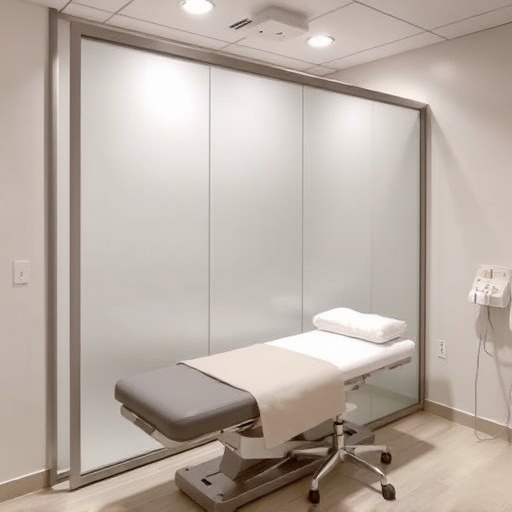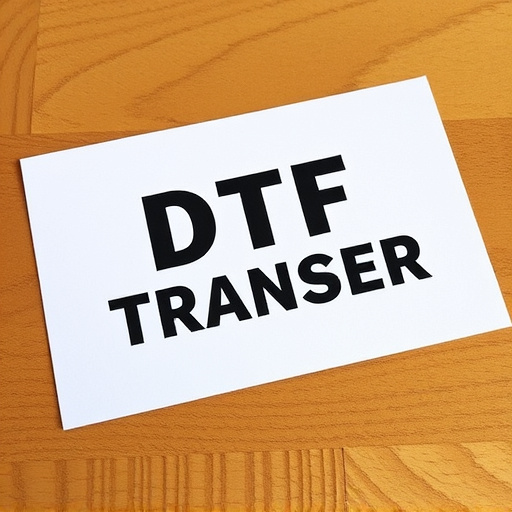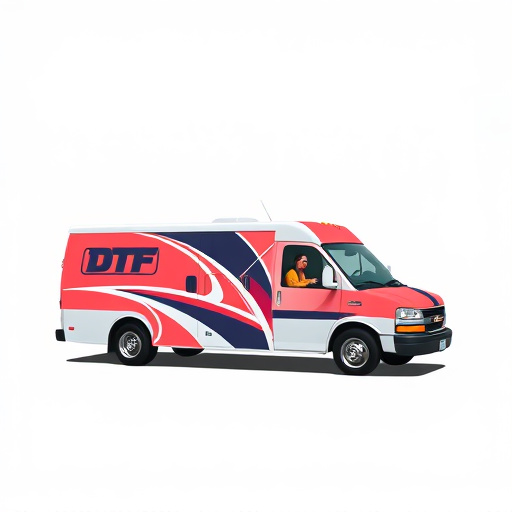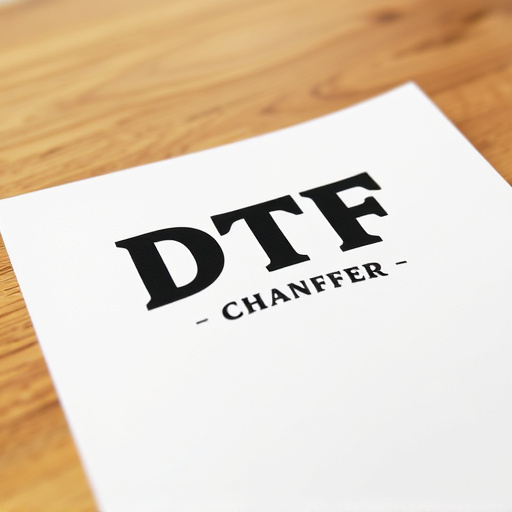Direct-to-Film (DTF) printing offers a cutting-edge solution for high-resolution graphics on various surfaces. Optimal heat settings, ranging from 300-350°F (149-177°C), are crucial for achieving crisp, bubble-free images. Factors like film type, humidity, and substrate roughness influence these settings. Proper preparation, including cleaning and calibrating equipment, ensures successful DTF transfers on merchandise and home decor, resulting in vibrant, durable prints.
“Unlocking the secrets of achieving flawless direct-to-film (DTF) transfers starts with understanding the heat settings that matter. This comprehensive guide delves into the intricacies of DTF printing, equipping users with the knowledge to optimize their prints. From grasping the fundamentals of DTF transfers to mastering heat application, we explore factors influencing print quality. Learn essential steps for setting your printer and avoid common pitfalls. Discover advanced tips to elevate your DTF skills and create indelible films.”
- Understanding Direct-to-Film (DTF) Transfers: A Basic Overview
- Choosing the Right Heat Settings for Optimal DTF Transfer Quality
- Factors Influencing Heat Application in DTF Printing
- Step-by-Step Guide to Setting Your Printer for DTF Transfers
- Common Mistakes to Avoid During DTF Print Heat Application
- Advanced Tips for Achieving High-Quality DTF Prints
Understanding Direct-to-Film (DTF) Transfers: A Basic Overview

Direct-to-Film (DTF) transfers are a cutting-edge method in the printing industry that offers a unique and efficient way to apply graphics directly onto various surfaces, including film and other materials. This process eliminates the need for traditional printing methods like screen printing or vinyl cutting, streamlining the application of designs. DTF technology has revolutionized both small-scale and large-format printing, making it accessible to a wide range of businesses and individuals.
DTF prints involve using specialized equipment to apply a print head directly onto the target surface, allowing for high-resolution and vibrant colors. This method ensures precision and quality, making it ideal for creating visually appealing transfers that can be applied to a multitude of items. Whether it’s personalizing merchandise, enhancing marketing materials, or adding creative touches to home decor, DTF transfers offer a versatile and effective solution, catering to both commercial and hobbyist applications.
Choosing the Right Heat Settings for Optimal DTF Transfer Quality

Choosing the right heat settings is crucial for achieving optimal quality in direct-to-film (DTF) transfers. Factors like material type, film thickness, and desired print resolution all play a role in determining the ideal temperature and application time. Start by consulting the manufacturer’s guidelines, which typically provide recommended heat settings for various DTF materials and prints.
Experimentation is key to fine-tuning your process. Apply heat gradually, starting at lower temperatures, and increase as needed while closely monitoring the transfer’s progress. Look for signs of proper adhesion, such as a crisp image with no air bubbles or wrinkles, and ensure that the film is fully fused to the substrate without excessive melting or damaging the underlying material.
Factors Influencing Heat Application in DTF Printing

When applying direct-to-film (DTF) transfers, several factors significantly influence the heat application process for optimal DTF printing results. The first crucial factor is the type of film used; different materials have varying thermal properties, affecting how they absorb and conduct heat. For instance, higher temperature settings may be required for thicker films or those with low thermal conductivity to ensure complete bonding to the substrate.
Another critical consideration is the moisture content in the print environment. High humidity levels can impact the heat transfer process by causing condensation on the film surface, potentially leading to poor adhesion and print quality issues. DTF prints are sensitive to these conditions, so controlling the environment is essential for consistent results. Additionally, the substrate itself plays a role; rougher surfaces may demand more aggressive heating to ensure contact with the film, while smoother substrates might require lower temperatures.
Step-by-Step Guide to Setting Your Printer for DTF Transfers

Setting your printer correctly is a crucial step to achieve high-quality DTF (Direct-to-Film) transfers. Here’s a simple, step-by-step guide:
1. Select the Right Media Type: Start by selecting “Specialty Paper” or “Vinyl Film” as your print medium in your printer’s settings. This ensures the appropriate surface for DTF printing. Different materials require distinct heat and pressure to adhere properly.
2. Adjust Heat Settings: The key to successful DTF prints lies in the heat applied during the fusing process. Generally, temperatures between 300-350°F (149-177°C) work best for most DTF films. Refer to your specific film’s instructions for optimal temperature ranges as variations exist based on the material and brand. It’s crucial not to exceed these guidelines to prevent warping or damaging your project.
3. Set Pressure: Apply moderate pressure during printing, just enough to ensure good contact between the design and transfer film. Over-pressing can cause smudging or damage to the print.
4. Choose Fast Printing Speed: While it might be tempting to rush the process, using a slower printing speed allows for better precision and more consistent results.
5. Test Print: Before applying your DTF transfer to your final project, perform a test print on scrap material to ensure optimal settings and visualize the final outcome.
Common Mistakes to Avoid During DTF Print Heat Application

When applying direct-to-film (DTF) transfers, avoiding common mistakes is key to achieving crisp, professional results. One frequent blunder is exceeding the recommended heat levels for the specific DTF material. Overheating can cause the transfer to bubble, wrinkle, or even lift from the substrate, leading to poor adhesion and a visually unappealing finish. Always follow manufacturer guidelines and use a thermometer to monitor temperature, ensuring it matches the optimal range for your chosen DTF product.
Another mistake to steer clear of is inadequate pressure during application. Insufficient pressure can result in air bubbles, misaligned prints, or incomplete transfer of the design. A good rule of thumb is to use a weight that provides firm contact but doesn’t deform the substrate or the DTF film. Proper cleaning and preparation of both surfaces before heat application are also essential, as dirt, grease, or residual substances can hinder adhesion, leading to failed transfers and unsatisfactory DTF prints.
Advanced Tips for Achieving High-Quality DTF Prints

To achieve high-quality DTF (Direct-to-Film) transfers and prints, consider these advanced tips. First, ensure your film is properly prepared by cleaning it to eliminate any debris or dust that could affect the print quality. Using a clean, static-free environment during the application process is crucial for obtaining sharp and crisp results.
Second, calibrate your heat press precisely. The ideal temperature and pressure settings depend on the type of film and substrate used. Accurate control ensures the DTF transfer adheres perfectly without causing damage to the original art or print. Adjusting these parameters can significantly impact the final print’s vibrancy and durability.














